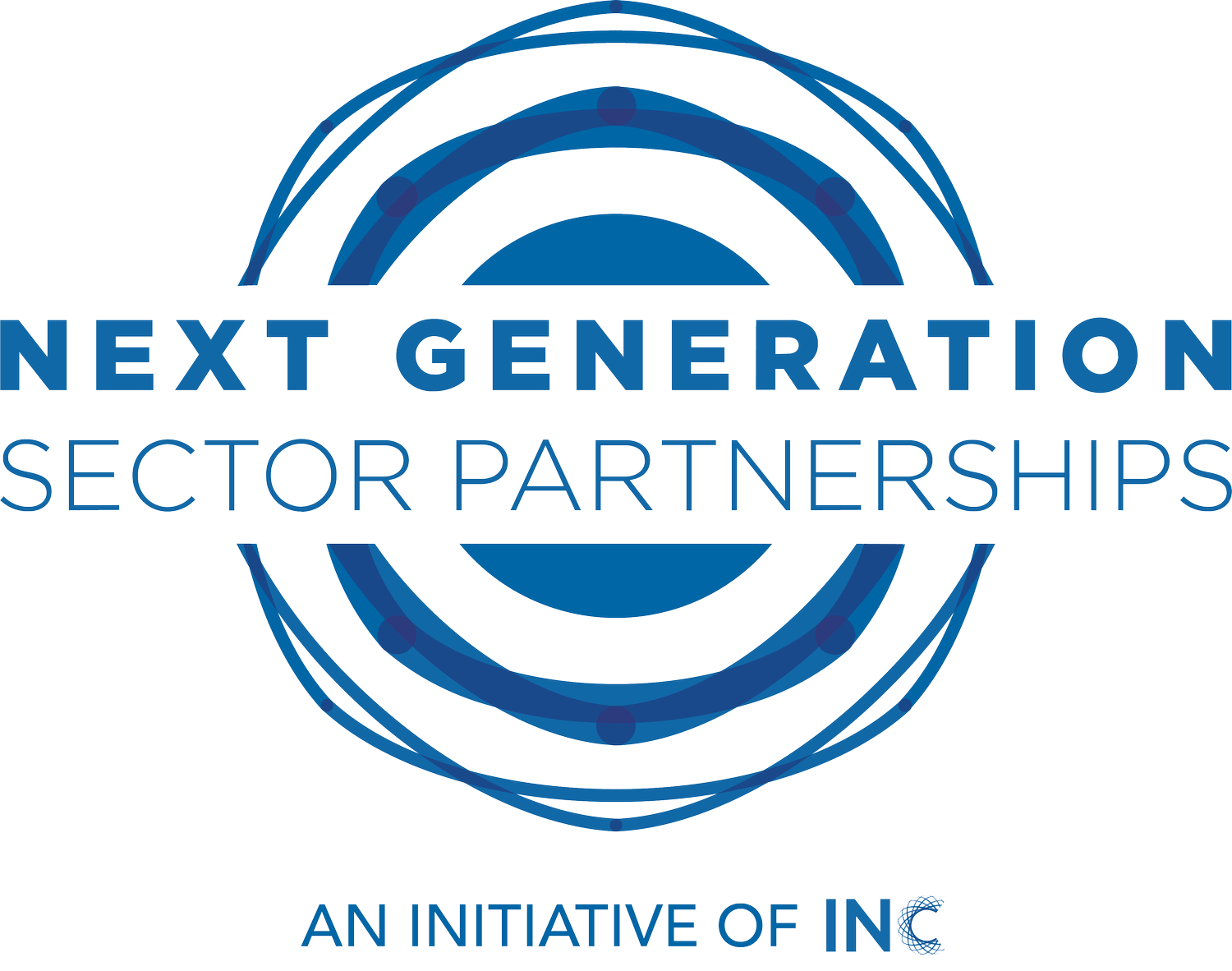What Are Next Gen Sector Partnerships?
Next Generation Sector Partnerships are partnerships of businesses, from the same industry and in a shared labor market region, who work with education, workforce development, economic development and community organizations to address the workforce and other competitiveness needs of the targeted industry.
Next Gen Sector Partnerships Are…
Industry-Driven. Business leaders come together to define a shared agenda based on the priorities that most impact the vitality and competitiveness of their industry—not the agenda of public programs. In a Next Gen Partnership, business leaders also drive the action. They personally champion priorities, volunteering on task teams to push for outcomes and results.
Community-Supported. Next Gen Sector Partnerships rely on a coordinated team of support partners including workforce development, economic development and education who work together to respond to industry needs. The partnership acts as a "shared table" for business leaders to collaborate with a range of public partners and for public partners to work together to align programs to industry needs.
Sustainable over time. Since Next Gen Sector Partnerships are organized around the topic that interests business leaders most--what it takes to ensure that their company thrives--they are sustainable over time.
Active across the country. Next Gen Sector Partnerships are active all over the country, from major metro to rural areas. They operate in industries ranging from manufacturing, health care, technology, transportation and logistics, food and agriculture and more. While no two partnerships are exactly alike, they share a common set of distinguishing characteristics and are developed through the disciplined process outlined in the Next Gen Sector Partnership toolkit.
Next Gen Sector Partnerships Achieve Impact
For businesses
Direct benefits from increased business-to-business networking
More direct access to coordinated network of public partner programs
Improved internal operations
Improved talent management and advancement practices
Reduced time-to-hire for critical occupations
Increased staff retention
Shared costs of employee training
New product lines, services or markets
For Regional Economy
New jobs created
More local people hired for local jobs
New companies recruited to the region
More companies retained in the region
More companies stabilized in the region
Improvements in regional infrastructure including transportation, technology
For Students, jobseekerS and Workers
Increased awareness by students of careers and opportunities in regional industries
More opportunities for work-based experiences like internships
Increased attainment of industry-relevant credentials
Increased placement into jobs in target industries
Evidence of advancement with associated pay and benefits increases
Improved job quality (wage, benefits, equity)
For Community Development
Unexpected community projects
More businesses investing in community
Shifts in community identiy
Improvements to social support systems like transportation, childcare
On Public Programs
Evidence of reduced duplication by public and community-based organizations
Specific examples of system coordination (shared advisory boards, co-staffing of shared initiatives)
Increased collaboration between industry and local high schools and CTE programs
New cross-system career pathways
Formal policies that align programs across secondary, post-secondary and workforce
Blended program funding
For Systems Change
Formal mechanisms established for multiple systems and jurisdictions to agree and coordinated industry engagement via shared sector partnerships
Partnership acts as a shared regional education advisory board, replacing many, smaller education advisory boards
See a sample of real impact indicators from six partnerships around the country in the Next Gen Benchmarking Framework.
Is your partnership Next Gen?
Review the indicators of Next Gen Sector Partnerships here.
Photo Credit: Pam Lindley, City of Phoenix


